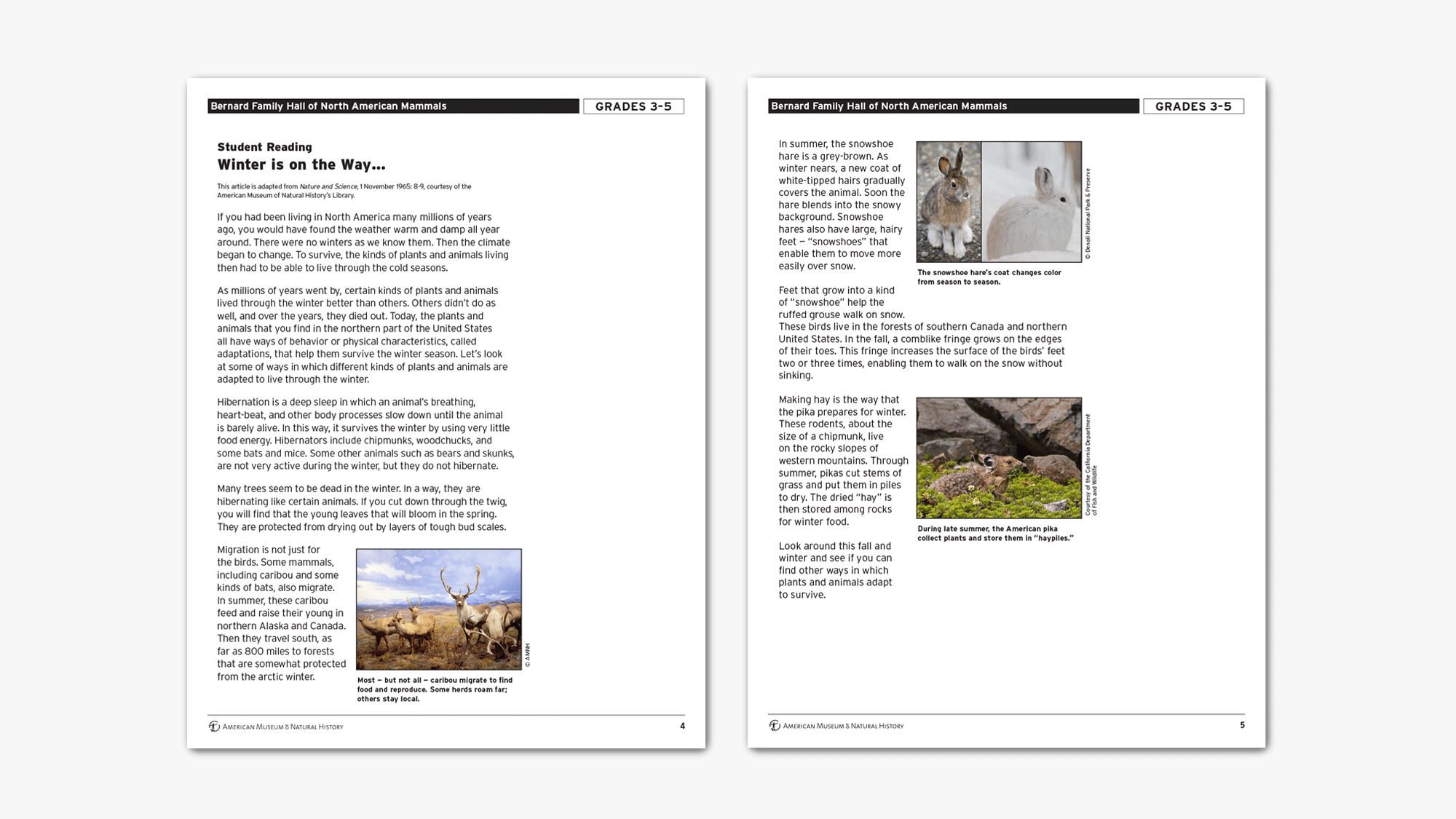Virtual Field Trip to the Hall of North American Mammals
Part of Hall of North American Mammals.
This activity is modular to give teachers the flexibility in how they assign components to their students. The Virtual Hall Tour and Student Investigation are the core assignment. The extension activities are meant to provide opportunities for deeper student engagement and could be assigned over several days.
For more information about how to adapt this activity for your students, standards-alignment, and answer keys, download a Teacher's Guide:
Core Activity: Virtual Hall Tour and Student Investigation
Students will use Google Arts and Culture to take a virtual tour of the Bernard Family Hall of North American Mammals and find three habitat dioramas: Black-Tailed and Antelope Jackrabbits, North American Beaver, and Dall Sheep. Have them use the map below to locate dioramas. Then, students will select one of the three dioramas to observe closely and complete a worksheet describing the animal and its adaptation to its environment by visiting the Hall of North American Mammals, and the following worksheets:
Extension Activities
To deepen student engagement with this content, you may choose to add one or more of the following extension activities:

Reading Assignment
This part of the activity engages students in reading a non-fiction text about how animals must be adapted to an environment in order to survive in it. The reading will prepare students for their visit by introducing them to the topic and framing their investigation. Ask students to write notes in the large right-hand margin or on a separate sheet of paper. For example, they could underline key passages, paraphrase important information, or write down questions that they have.
Writing Task
This informational writing task asks students to draw on the reading and observations recorded during the virtual field trip, to write an illustrated essay about animals and their adaptations. The writing task should only be assigned as culminating work, if students have also completed the reading and answered the questions from the student investigation. A student checklist and teacher rubric are included.
Student writing task
Based on the article “Winter is on the Way…” and your virtual visit to the Bernard Family Hall of North American Mammals, write an illustrated essay in which you:
- define “adaptation”
- explain why animals must be adapted to an environment in order to survive in that environment
Be sure to include:
- examples of three animals, their habitats, and the relationship between the needs and characteristics of each
- labeled illustrations of each animal showing the adaptation(s)
Support your discussion with evidence from your reading and the Bernard Family Hall of North American Mammals.
Theodore Roosevelt's Outdoor Adventures
Students can select one of three dioramas from the Hall of North American Mammals to observe and then answer questions about the plants and animals represented in it in a virtual field journal.
North American Mammals Coloring Book
Students can find out how six different north American mammal species survive in their habitats and bring them to life with this coloring book.
If you have any questions or feedback, please email us at [email protected]